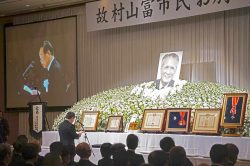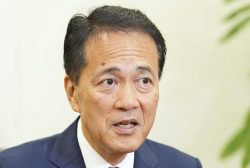Overtourism, Weak Yen Change Form of School Trips; Crowds at Tourist Hotspots Shift Students to Alternative Destinations
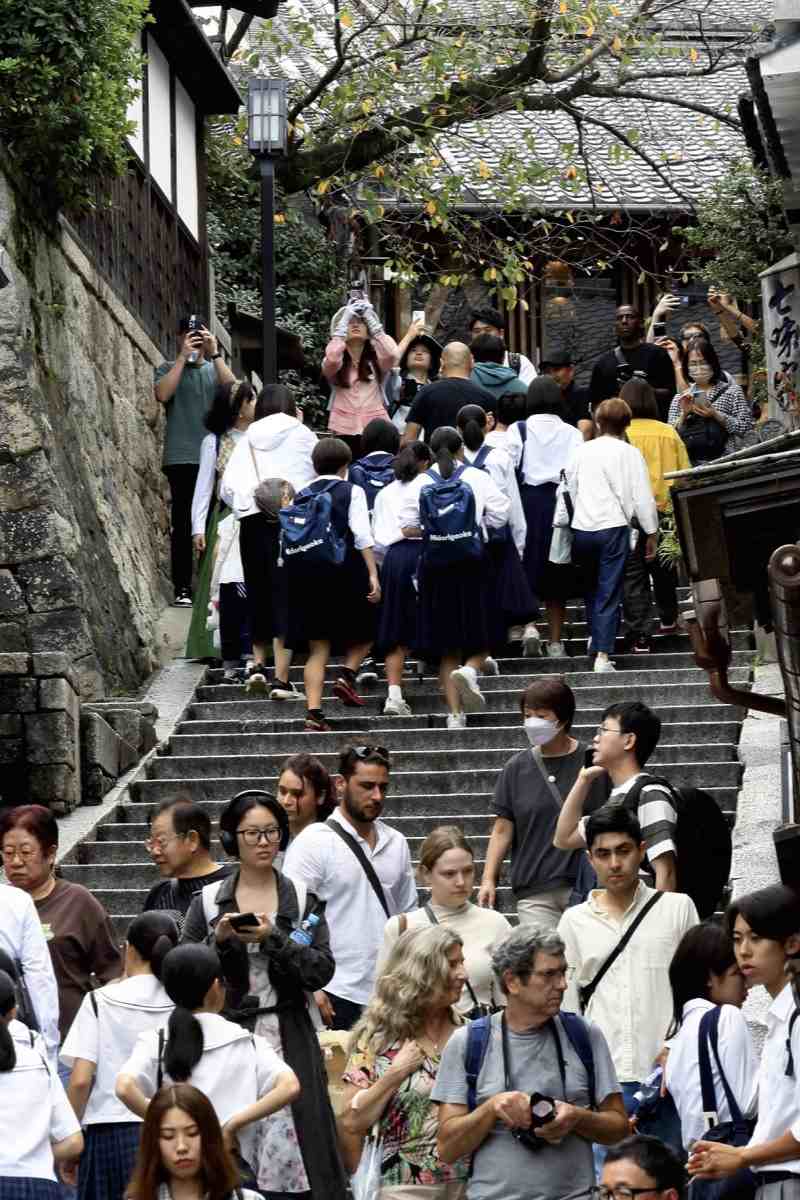
Students on a school trip and foreign tourists walk around an area near Kiyomizudera Temple in Kyoto on Oct. 8
15:42 JST, October 27, 2024
With the increasing number of foreign tourists to Japan and the depreciation of the yen, the form of school trips for junior high and high school students is beginning to change.
More and more schools are moving away from Kyoto and other staple school trip destinations as well as popular overseas locations.
The diversification of school trips is likely to continue, with a survey showing that half of schools are considering alternative destinations.
“It’s no longer possible to visit popular temples and shrines as we used to,” said Hiroshi Mitamura, 64, principal of Kamiyugi Junior High School in Hachioji, Tokyo.
Kyoto was the destination for its school trip in September.
There were long lines at bus stops and both Kiyomizudera Temple and Fushimi Inari Taisha Shrine were packed with foreign tourists, he said.
According to a survey conducted by the Educational Tour Institute in the 2023 academic year, 90% of public junior high schools in the Kanto region conducted school trips to the Kinki region. However, 54% said they would like to consider other destinations for such trips in the future, citing the Hokuriku and Tohoku regions as alternative destinations.
As students are unable to visit the same number of tourist attractions due to the crowds, they cannot expect the same learning benefits as before. Therefore, it is said that many schools are considering alternative destinations.
Kamiyugi Junior High School changed the destination for next year’s school trip to the atomic-bombed city of Nagasaki.
“Amid the tense international situation, we want to focus on peace education,” Mitamura said.
Shintaro Inoue, 13, a second-year student at the school said, “I want to study the history and culture of Nagasaki.”
The number of schools choosing overseas destinations for school trips has not returned to pre-pandemic levels due to factors such as the weak yen and rising fuel costs.
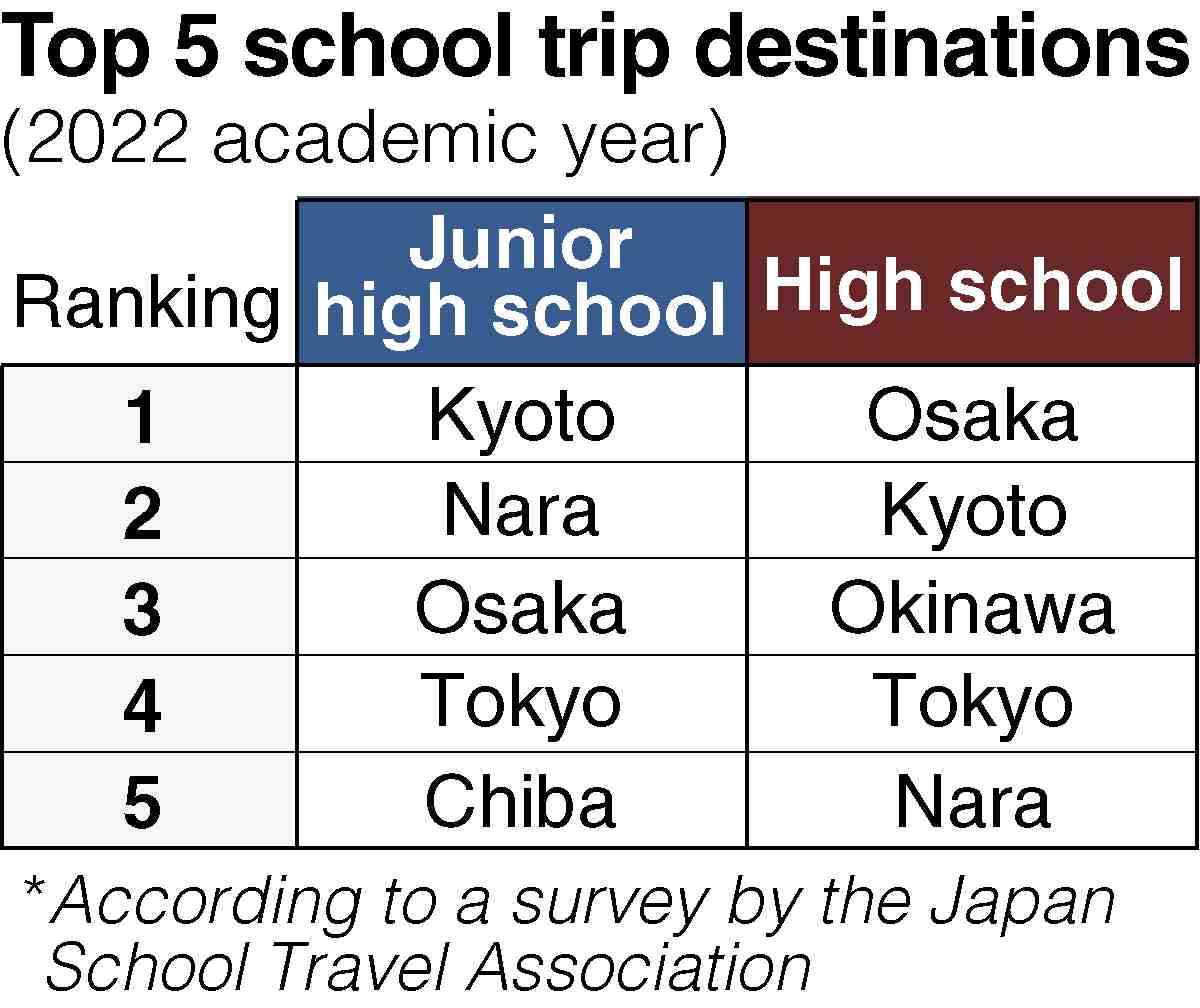
According to JTB Corp., 45% of schools that used to send students on school trips abroad before the pandemic have switched to domestic trips.
The town of Yamatsuri in Fukushima Prefecture had sent junior high school students to Australia for about 25 years, but stopped the program because of the rising cost of travel.
The focus of school trips has also changed from conventional sightseeing to one of increasing exploration and experience, with “exploratory learning” being emphasized in the current official guidelines for school teaching.
Students from Yashio High School toured Hokuriku and other regions over four days and three nights during their school trip in October.
The students conducted exploratory learning on Fukui Prefecture, where the residents are ranked first in Japan for happiness, but the number of tourists is low.
They also had the experience of staying in minpaku lodgings at private homes.
Decentralized activities and experiential programs are also being encouraged by local governments that host large numbers of student trips.
For schools, Okinawa Prefecture provides a subsidy of up to ¥10,000 per student if schools decrease the use of buses from October to December, when there is increase in tourist groups, and if activities are conducted outside of tourist areas during school trips.
Since the last academic year, the city of Kyoto has provided students on school trips with free opportunities to watch dances by maiko apprentice geiko performers and to interact with them during the off-season.
“Given the educational goals of each school and the importance of inquiry and experience, the destinations of these trips should naturally become more diverse and decentralized,” said Shuichi Takeuchi, 71, chairman of the Japan School Tours Bureau. “I hope that students will also do some pre- and post-trip study to make their educatory journey more fulfilling.”
"Society" POPULAR ARTICLE
-

M4.9 Earthquake Hits Tokyo, Neighboring Prefectures
-

Israeli Tourists Refused Accommodation at Hotel in Japan’s Nagano Pref., Prompting Protest by Israeli Embassy and Probe by Prefecture
-

M7.5 Earthquake Hits Northern Japan; Tsunami Waves Observed in Hokkaido, Aomori and Iwate Prefectures
-

Tsukiji Market Urges Tourists to Avoid Visiting in Year-End
-
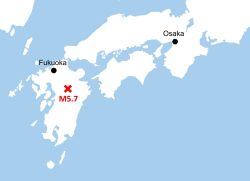
M5.7 Earthquake Hits Japan’s Kumamoto Pref., Measuring Upper 5 Intensity, No Tsunami Expected
JN ACCESS RANKING
-

Keidanren Chairman Yoshinobu Tsutsui Visits Kashiwazaki-Kariwa Nuclear Power Plant; Inspects New Emergency Safety System
-

Imports of Rare Earths from China Facing Delays, May Be Caused by Deterioration of Japan-China Relations
-

University of Tokyo Professor Discusses Japanese Economic Security in Interview Ahead of Forum
-

Tokyo Economic Security Forum to Hold Inaugural Meeting Amid Tense Global Environment
-

Japan Pulls out of Vietnam Nuclear Project, Complicating Hanoi’s Power Plans


